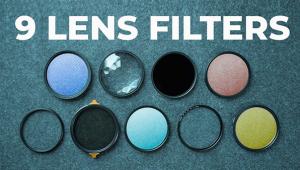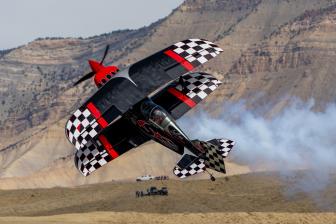Konica Minolta’s DiMAGE Scan Dual IV; Make Superb High-Resolution Scans From 35mm Slides And Negatives Page 2
flat-bed scanner with TPU, making the Konica Minolta model a fine choice even for novices in digital imaging. If you fall into this category, use the features described earlier and you'll be pleasantly surprised by their effectiveness, with one exception. The automatic "Dust Removal" tool removes some specks, but not others. To eliminate any remaining spots, plan to use the cloning brush in Photoshop Elements 2.0.
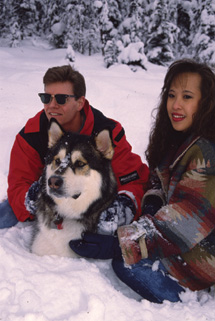 A |
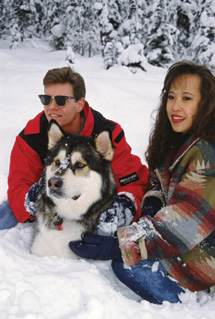 B |
|
|
||
Advanced Pre-Scan Options
In order to access more sophisticated tools for perfecting any image at the
pre-scan stage, launch the DS Dual 4 Utility instead of Easy Scan. You'll
find a wealth of additional options for greater control over all aspects of
a scan, and most will be familiar to anyone with experience with an advanced
image-editing program. These include levels, curves, and exposure control for
individual RGB channels, all with histograms, sliders for adjusting hue, saturation,
lightness, brightness, contrast, and color balance, a fully adjustable Unsharp
Mask filter, and more. Other tools are unique to the scanner software, such
as the options for setting a specific point for focus and exposure, the multifaceted
Pixel Polish utility for various types of image enhancements, as well as the
"Digital Grain Dissolver" and "Auto Dust Brush" tools,
both with levels controls in the DS Dual 4 Utility.
Review the instruction manual for specifics on how to make a pre-scan and on
how to access and employ the many features to achieve any desired effect. Start
by using the most intuitive feature, "Pixel Polish," a more sophisticated
tool than "Auto Image Correction." In addition to fully automatic
enhancement that includes sharpening, this utility provides several user-selectable
options for correcting a color cast, restoring faded colors, or solving exposure
and contrast problems. It also provides automated enhancement of color, brightness,
and sharpness enhancement customized for specific subject types: people, landscapes,
sea/sky, or night scenes. Try each of the "Pixel Polish" features
and observe the effect that it produces on the large preview image. While you
may need to use a couple of the other tools for some images, "Pixel Polish"
is quite effective in correcting certain technical problems.
The full suite of advanced image-enhancing tools provides incredible versatility.
Before scanning "difficult" slides and negs, I generally used levels,
curves, and selective color correction or color balance variations to achieve
the desired effect. Because most of my scans were quite "clean,"
I rarely found any need for the multi-sampling (to 16x) feature designed to
reduce digital noise in shadow areas. That was fortunate, because multi-sampling
dramatically increases scanning time. However, I found the Unsharp Mask filter
(at settings of 50/2/3) very useful for correcting the slight loss of sharpness
produced by any scanner, particularly when employing a dust or grain reduction
tool.
Do note that Pixel Polish, as well as the dust and grain control features, extend
scanning time by about 15 seconds each. Still the DiMAGE Scan Dual IV is lightning
fast when compared to some older 2800dpi scanners. Those machines required several
minutes to complete a basic scan using only autofocus and the standard autoexposure
feature.
 |
|
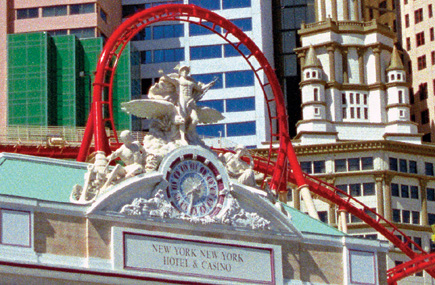 |
|
|
Evaluation: When used with the DS Dual 4 Utility, the pre-scan
enhancement process can range from simple with Pixel Polish to quite easy and
intuitive with the sliders provided for adjusting many image parameters. The
process can also be quite complex with the more sophisticated tools that offer
greater precision for the experienced user who wants maximum control.
The DiMAGE Scan Dual IV generated 3200dpi scans with near-perfect exposure and
contrast, great highlight and shadow detail, and high color fidelity with pleasing
skin tones. After optimizing the best images for printing in Photoshop, I made
some 11x16" outputs at 260 ppi and some 13x19" outputs at 240 ppi
using an Epson Stylus Photo 2200 at 1440dpi printer resolution. Under close
examination, the 11x16" prints are gorgeous, superior to those that I've
made from 35mm film scans generated by a 3200dpi flat-bed with TPU. The 13x19"
prints also look great, especially when observed from a typical viewing distance
of about 4 ft.
For a high-resolution film scanner that sells for a mere $239, this DiMAGE model
is exceptionally versatile and effective, with one exception. Auto Dust Brush
is not as effective as Digital ICE, available with some of the more expensive
film scanners. The instruction manual also recommends using the Dust Brush plug-in
for Photoshop (included) in post-processing. This tool produced better results,
but only after a lot of tedious experimentation to determine the suitable settings.
In all other respects, including speed, I would rate this machine very highly.
Final Assessment
Although I recommend a dedicated film scanner over a flat-bed with a TPU for
35mm film scans, I'll concede that
flat-beds offer some advantages. Aside from the versatility mentioned earlier,
many high-end models accept much larger negatives and transparencies. A top-rated
3200dpi flat-bed ($400 +) will produce superlative results from medium format
film, suitable for making mural-sized prints. But for anyone who wants to scan
numerous "small format" frames, for making inkjet prints as large
as 13x19", this compact DiMAGE scanner would be a more logical choice.
Designed to entice the novice with simplicity, the Konica Minolta DiMAGE Scan
Dual IV should also satisfy many serious imaging enthusiasts. Combining advanced
technology with powerful image-enhancement tools and ease of use, it will produce
exceptional scans without the need for a large investment.
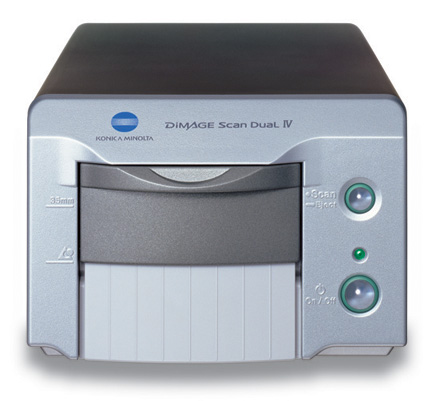
Technical Specifications
Optical Input Resolution: 3200dpi
Film Formats: 35mm; APS with optional adapter; color or black
and white
Output Data: 8 bit or 16 bit (per color channel)
Dynamic Range: 4.8
Additional Features: Many color space and color management
options; Digital Grain Dissolver and Auto Dust Brush; Unsharp Mask; multi-sample
scanning (2x to 16x); numerous automated and manual tools for adjusting exposure,
color rendition, etc., some with histogram; batch scan utility; many resolution
options
Connectivity: USB 2.0 (1.1 compatible)
Dimensions/Weight: 5.7x3.9x12.8"; 3.3 lbs
Accessories Included: Slide and negative film holders; USB
cable; AC adapter; Adobe Photoshop Elements 2.0 and DiMAGE software, including
Auto Dust Brush plug-in
Street Price: $239
For more information, contact Konica Minolta Photo Imaging U.S.A., Inc., 725
Darlington Ave., Mahwah, NJ 07430; (800) 285-6422, (201) 574-4000; www.konicaminolta.us.
A long-time "Shutterbug" contributor, stock photographer Peter K. Burian (www.peterkburian.com) is the author of "Mastering Digital Photography and Imaging," a 270-page book that offers a great deal of practical advice on all aspects of the topic. He is also a digital photography course instructor at: www.betterphoto.com.
- Log in or register to post comments




























